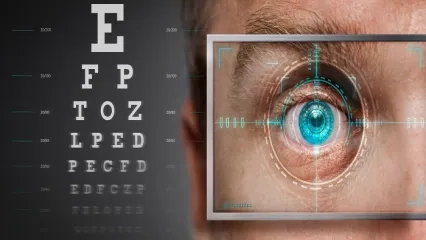Alo Yeditepe
Alo Yeditepe
Is Strabismus Genetic?
The condition in which the parallelism of both eye axes is disrupted and the inability to look at the same point is called strabismus. Noting that strabismus is a common problem in children, Ophthalmologist Assoc. Prof. Dr. İlke Bahçeci Şimşek added that successful results are achieved with early diagnosis and treatment.
The problem of strabismus can be seen in all age groups from infancy to adulthood. Genetics can also be effective in strabismus, which can be seen in about 4 percent of children. Ophthalmologist Assoc. Prof. Dr. İlke Bahçeci Şimşek points out that the presence of strabismus not only in parents, but also in more distant relatives is important, and emphasizes the importance of examination of all children by an ophthalmologist before the age of one.
The problem of strabismus can also cause psychological problems, especially in school-age children, as it leads to a negative external appearance. For this reason, this problem must be solved before the children reach school age. Since two different images will appear in the brain when the eye misaligns, the brain suppresses the image coming from the eyes. This can lead to a lazy eye by causing a decrease in the vision provided in that eye. Stating that lazy eye has causes other than strabismus, Assoc. Prof. Dr. İlke Bahçeci Şimşek, an Ophthalmologist from Yeditepe University Eye Center notes: “These conditions include untreated high hyperopia, astigmatism, the difference between the two eye numbers being too high, congenital cataracts, congenital droopy eyelid, and keeping one eye closed for a long time. Lazy eye can be prevented by early treatment.”
Not Every Misalignment in the Eye Is Strabismus
Some of the misalignments that occur in infancy and childhood are called "false misalignments". Yeditepe University Eye Center Ophthalmologist Assoc. Prof. Dr. İlke Bahçeci Şimşek, who states that false misalignment is a misleading appearance that occurs with the width of the eyelids and nasal root, continues as follows: “In this case, it is necessary to consult an ophthalmologist. Continuous misalignment of the same eye shows that vision is lower in that eye. For this reason, parents should apply to an ophthalmologist when they see misalignment in one eye in infants and children.”
Cell Phones, Tablets and Computers Can Cause Visual Impairment
The use of technological devices can pose a risk of visual impairment. Stating that children's staring at devices such as mobile phones, tablets, and computers for a long time increases the progression of the visual impairment called myopia, Assoc. Prof. Dr. İlke Bahçeci Şimşe informs that the most important factor preventing the progression of myopia has been proven to be the child's playing in daylight in recent scientific studies.
Eye misalignments are primarily treated with glasses and one eye closure. A significant part of the misalignments can be corrected with these two simple methods. Surgical methods should be applied without wasting time in misalignments that cannot be treated with these methods.
The surgical treatment of strabismus varies according to the direction and degree of strabismus. By making a small incision over the eye muscle, the muscles are reached and various position changes can be made in the muscles according to the type of strabismus. When necessary, both eyes are intervened. Although strabismus surgeries can be performed with local anesthesia in adults, general anesthesia is used in children. The patient is discharged from the hospital on the same day. The patient can return to normal activities within a day or two. Since there may be slight redness in the eye after the surgery, it may be necessary to use eye drops for a week. The patient can return to school or work within a week.
Treatment of Strabismus Varies Based on the Misalignment
Eye misalignments are primarily treated with glasses or closing one eye. A significant part of the misalignments can be corrected with these two simple methods. In misalignments that cannot be treated with these methods, surgical methods should be applied without losing time.
The surgical treatment of strabismus varies according to the direction and degree of strabismus. The muscles are accessed through a small incision over the eye muscle and various position changes can be made in the muscles depending on the type of strabismus. When necessary, both eyes are intervened. Although strabismus surgeries can be performed with local anesthesia in adults, general anesthesia is used in children. The patient is discharged from the hospital on the same day. The patient can return to normal activities within a day or two. Since there may be slight redness in the eye after the surgery, eye drops may need to be used for a week. The patient can return to school or work within a week.
About
Faculty and Year of Graduation:
Dokuz Eylul University, 2001
”
See Also
- What is Cataract? Symptoms and Treatment
- Do not Risk Going Blind While Trying to Have Colored Eyes
- Pay Attention to the Flashing Light in the Eye!
- Medication Administration to the Eye
- Thyroid-Related Eye Diseases
- Glaucoma
- Untreated Strabismus Can Cause Vision Problems!
- The Danger to the World: MYOPIA
- Eyelid Diseases
- One in 20 Newborns Have Tear Duct Obstruction
Alo Yeditepe




